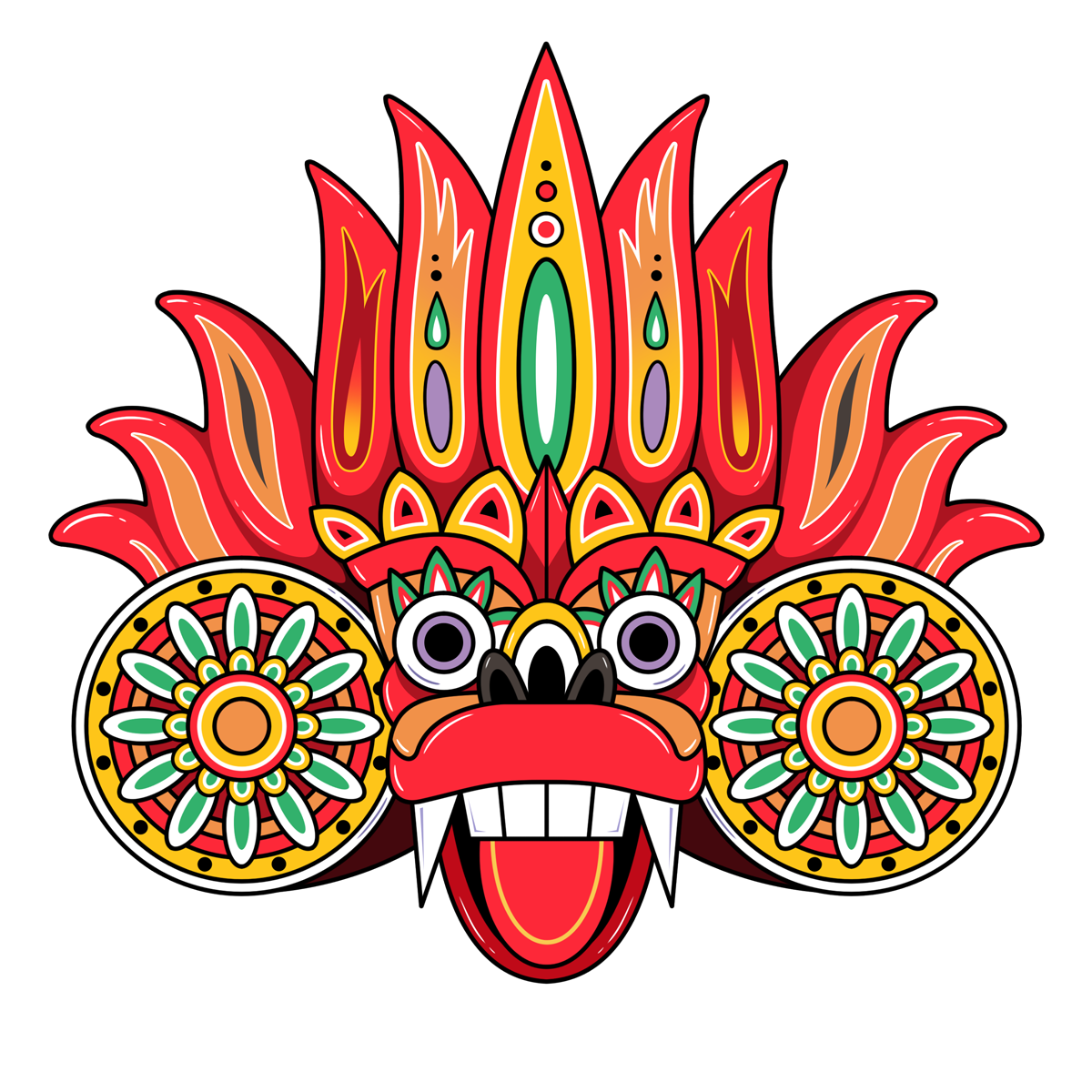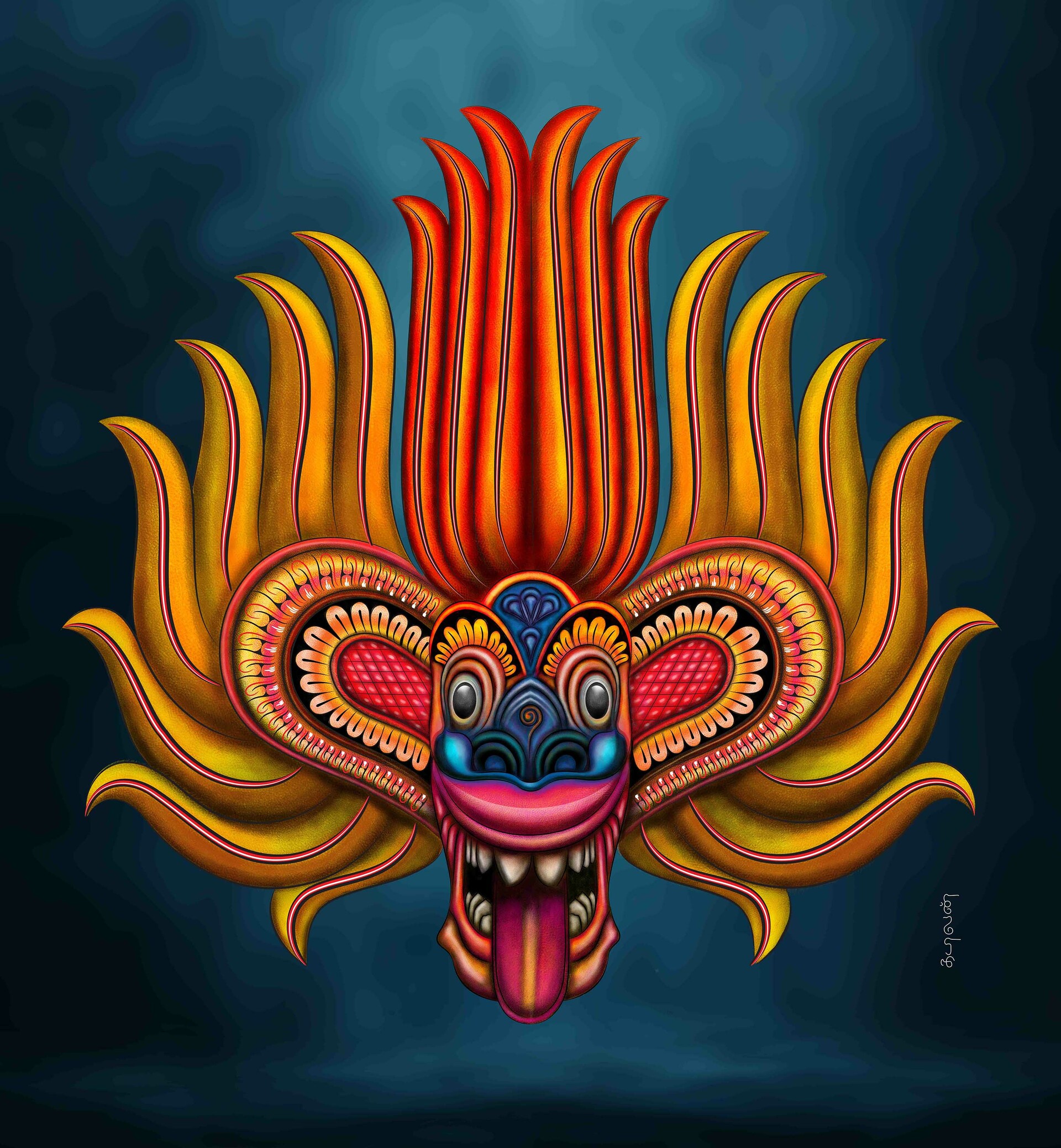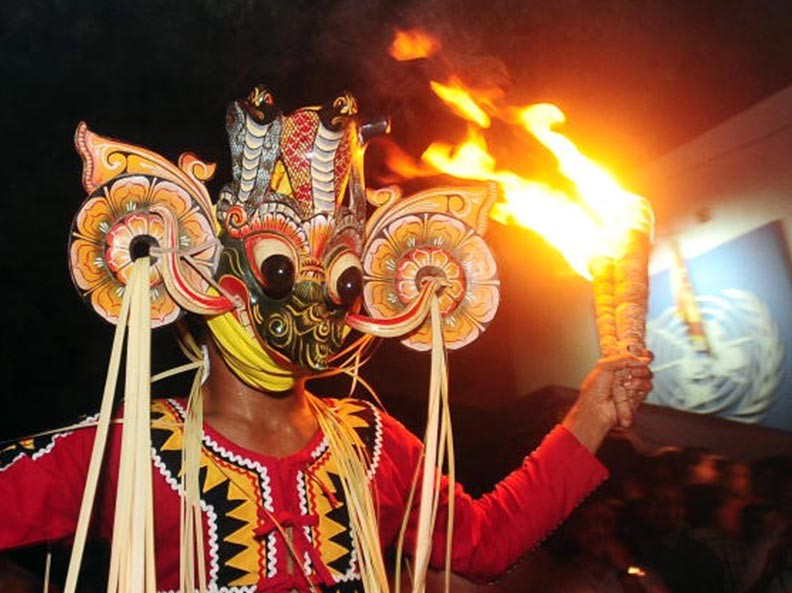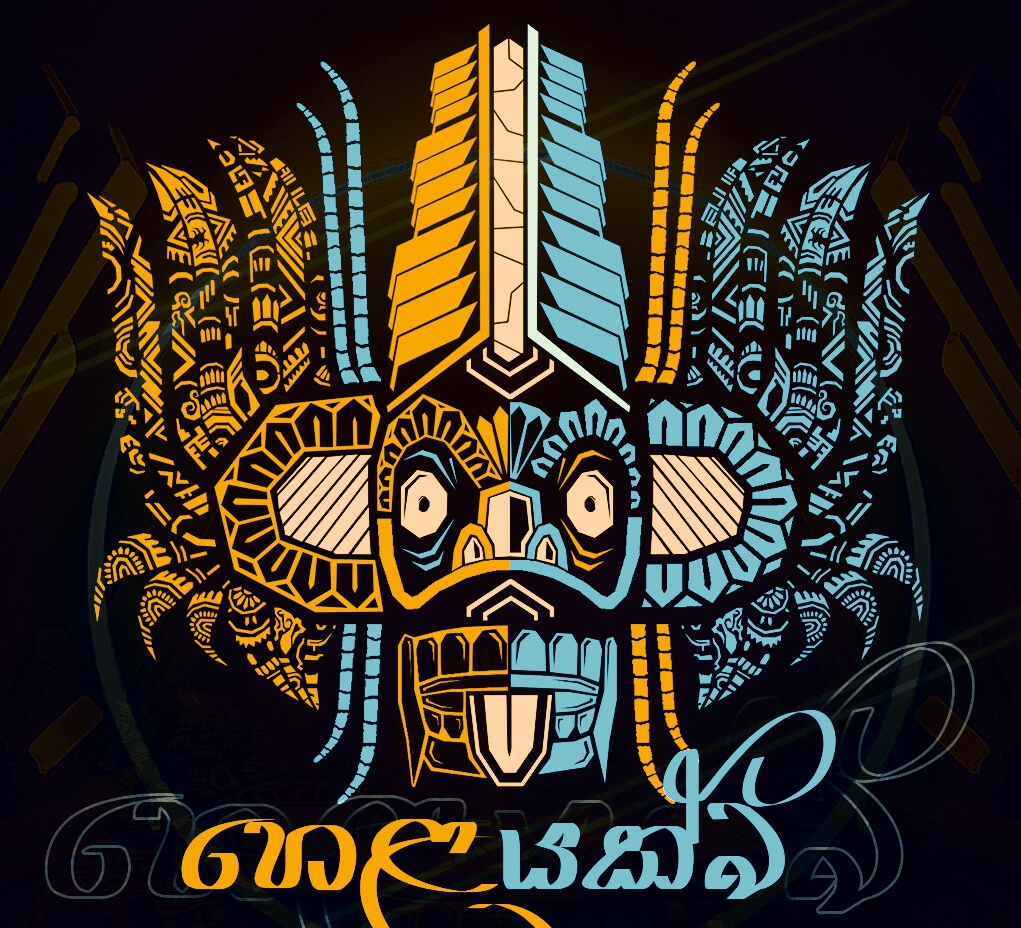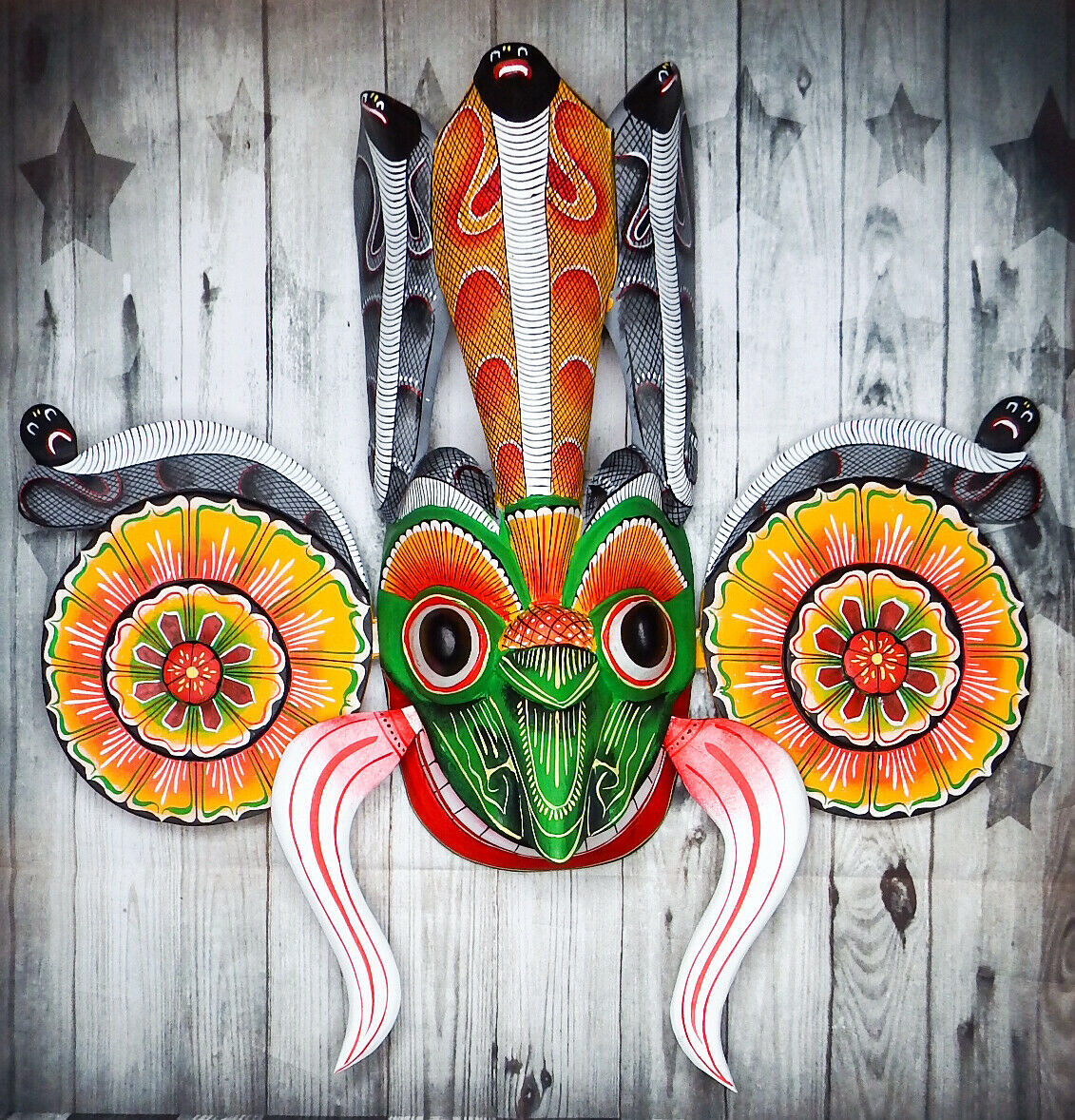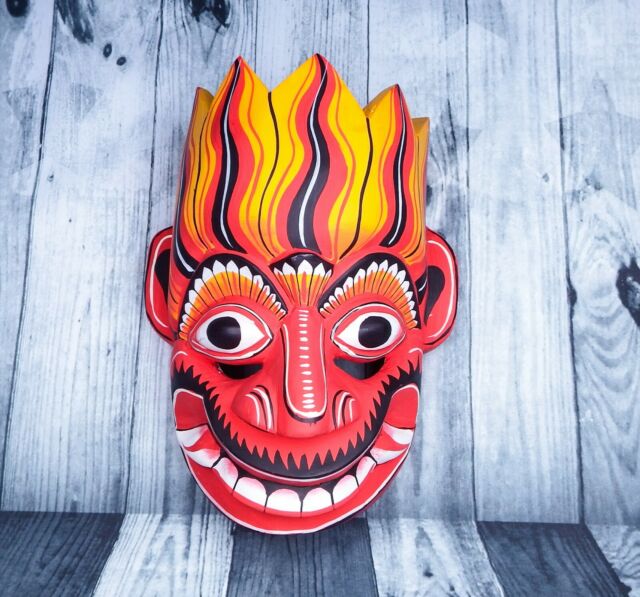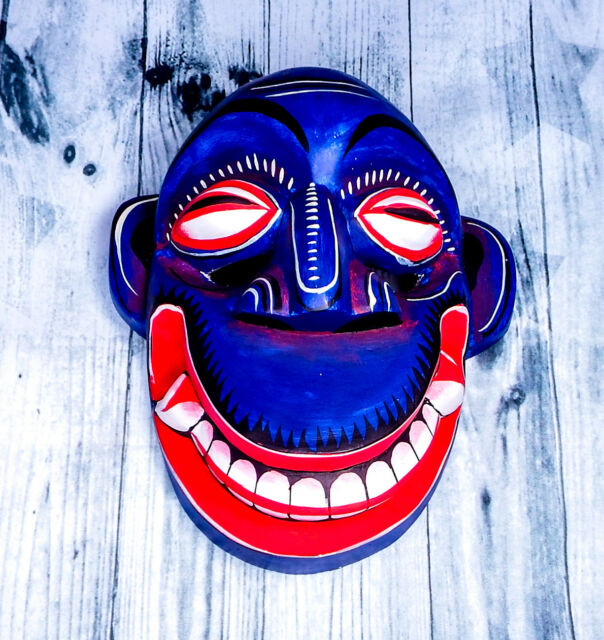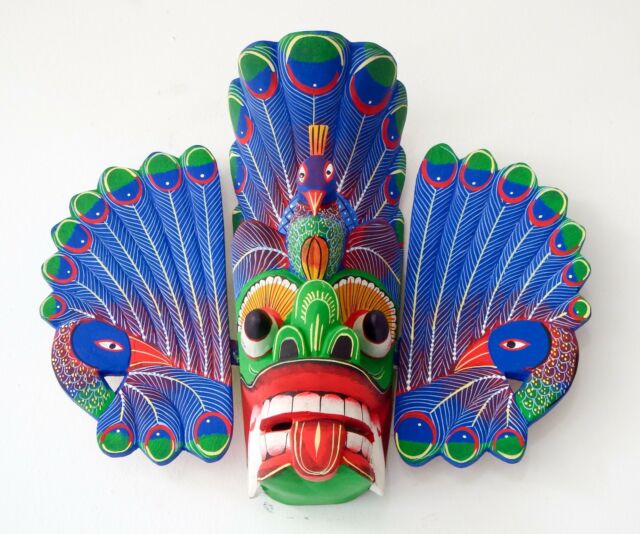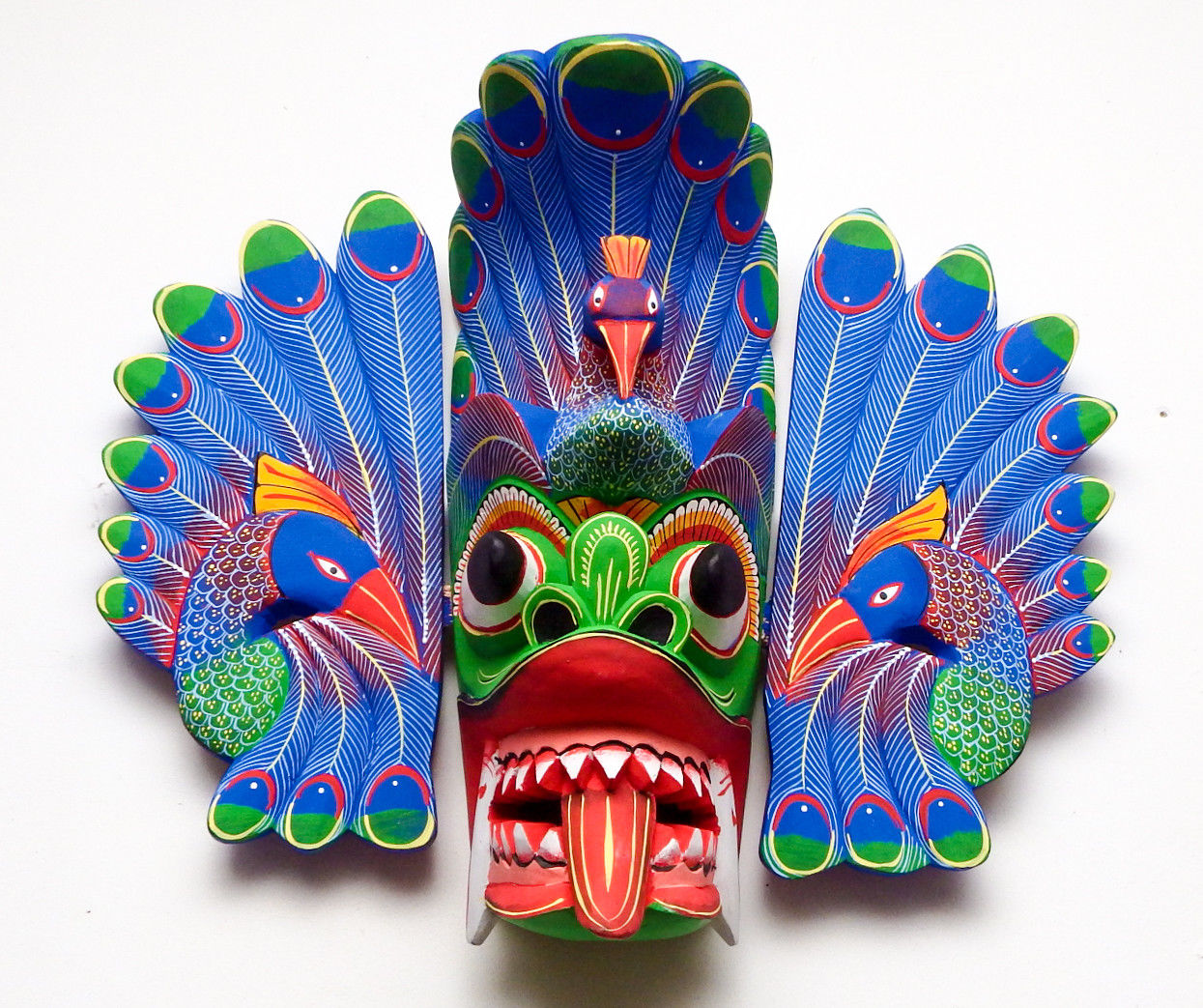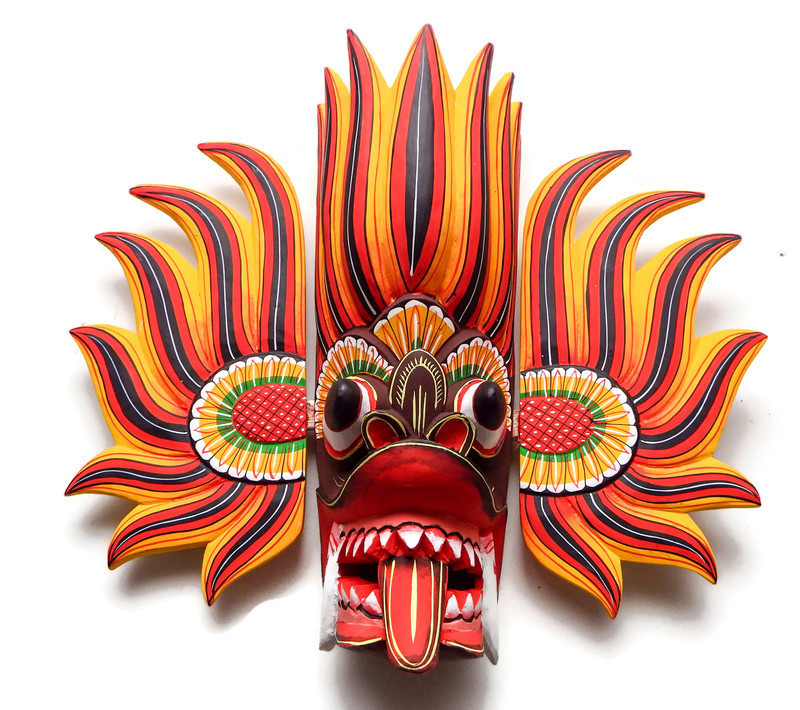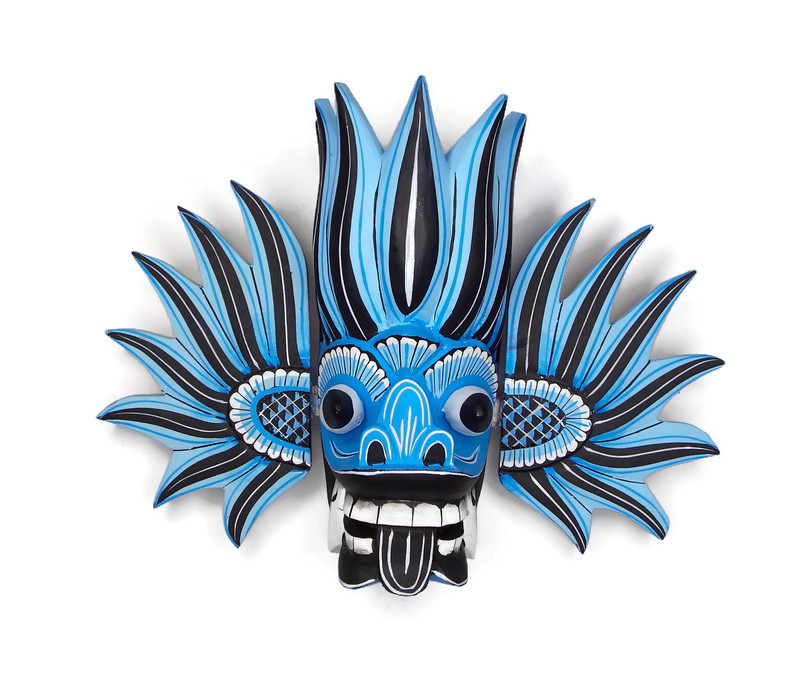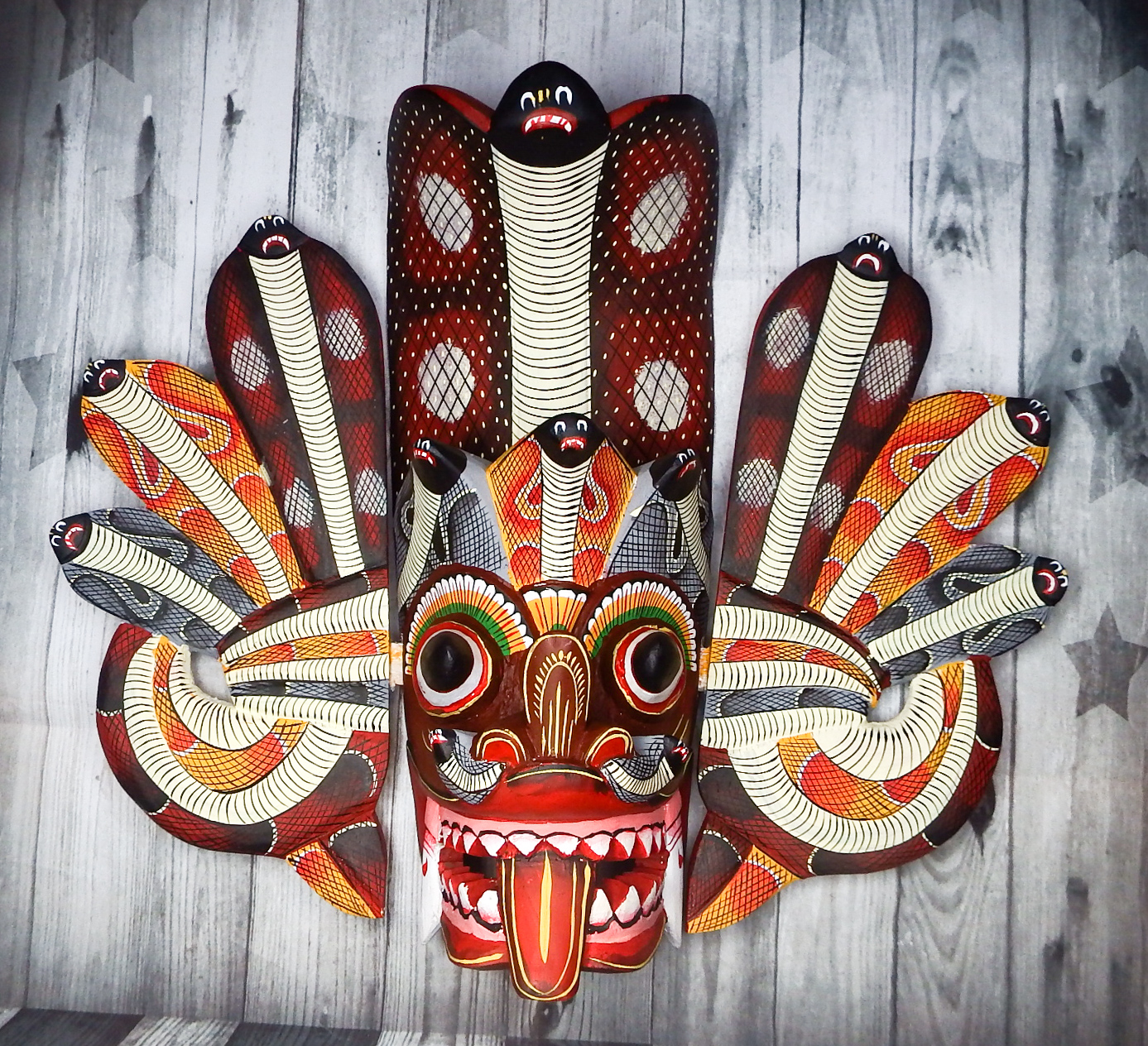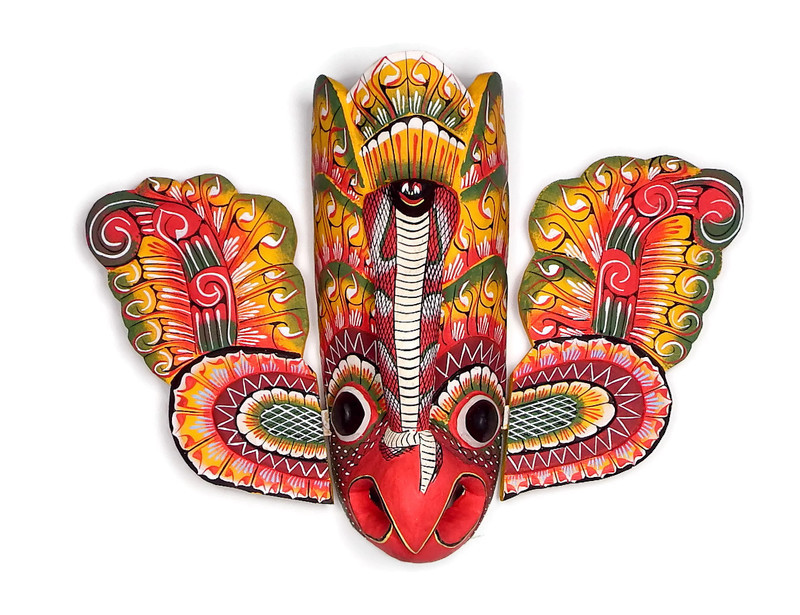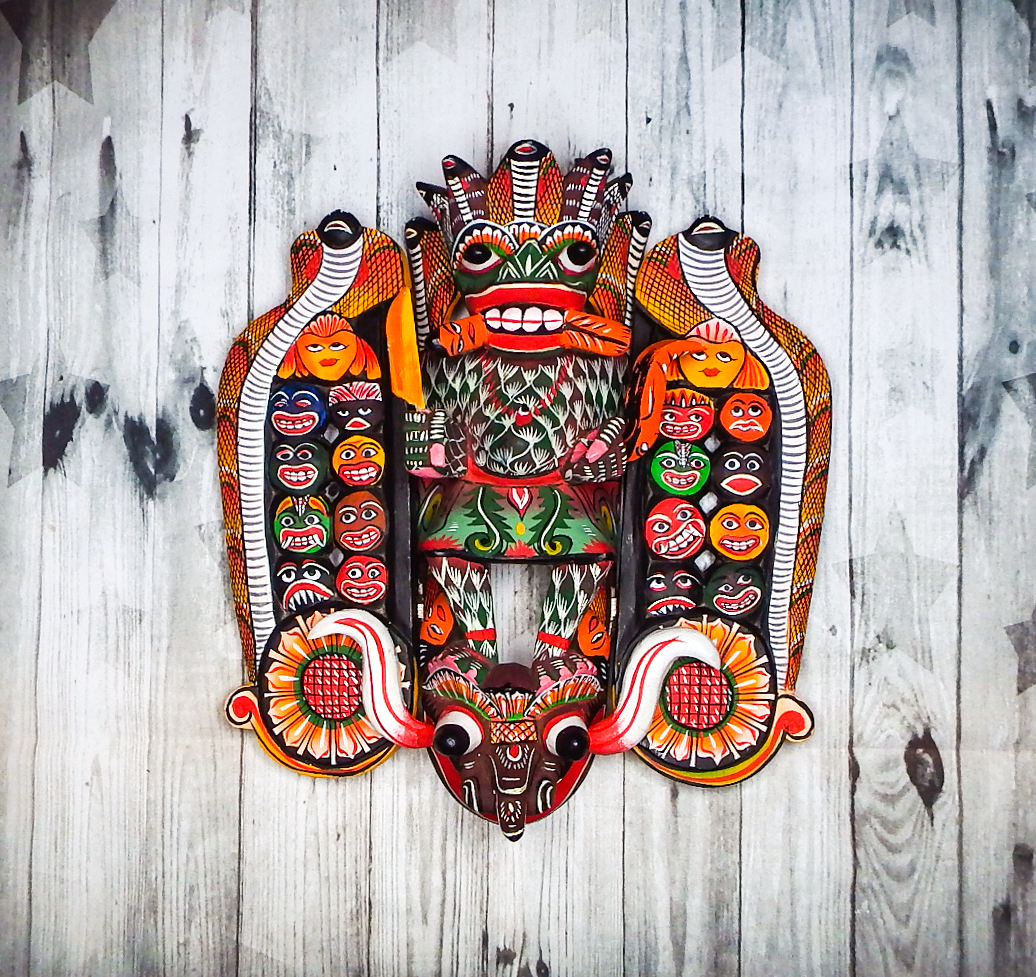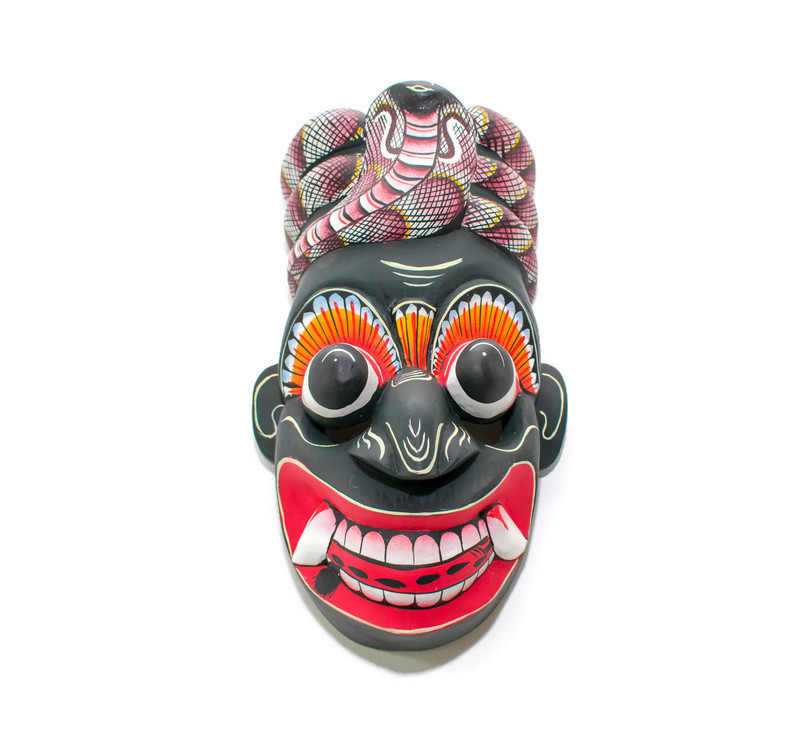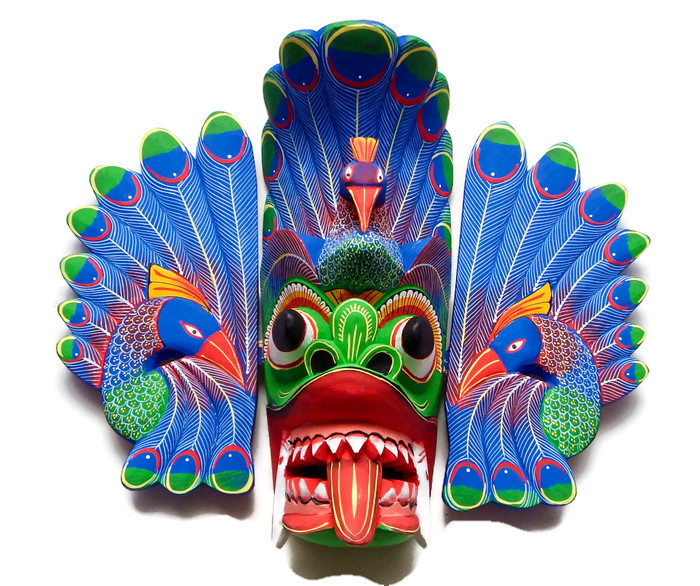Sri Lanka Kolam Rituals connection to South India
|
|
They would have not used masks but painted their faces with red stone and vegetable dyes. This would have then developed into forms of entertainment and later to impersonate unseen supernatural powers.
This would have been the earliest forms of magic or sorcery. In most of the cave murals in India masked figures are depicted. Thus this tradition had taken a new figuration, in tribal dances to ward off evil spells. In India some tribal dance forms still retain the masked faces in dances, in the remote, hill habitats, where foreign influence had found difficult to intrude.
The present State of Jharkhand was formely a princely state called Seraikella. Among the three mask dance forms in east India, the masks used by the Seraikella-chau is most equisite work of refined art. The Mayurbanj-chau has dispensed with the use of masks.
The Purulia masks being very heavy and are classified into two sectors, the rigid and immobile blue and the white masks for personification of gods and heroes and the colourful masks like those of Sri Lanka in ritual exorcist dance forms, represent demons and evil spirits.
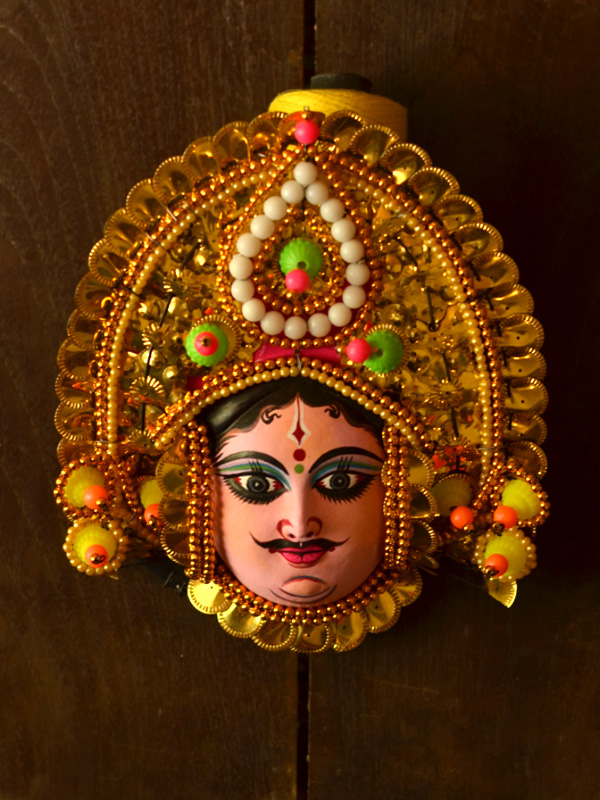
|
|
The Seraikella dance was patronized by Raja A. P. Singh Deo and Pratap Adiya Singh Deo. These members of the royal household were exponents of this dance form themselves.
They introduced many variations and suitably modified the masks to be attuned to the stories to be enacted. They based these dance forms on the works of poet Kalidasa of Meghaduta fame, and later of the works of Poet Laureate of India Rabindranath Tagore.
The face is always used to express emotions and feelings by the dancers in Chau dance, since the face is masked, the dancer has to be highly imaginative to express the feelings, through the body language exclusively, which requires a high degree of concentration. Some of the masks are heavy and carved out of wood, while others are made of paper.
The masks are made of the dark clay from the banks of the river, then kneaded into a thick paste. A clay model of the character is made and allowed to dry. Then layers of paper are laid upon it and glued together. A thin piece of muslin cloth is then stretched over it and covered with a layer of fine potter's clay. The clay is then smoothened to remove any creases and the mask is polished and painted after the clay is dried and removed.
The nose and eyes are chiselled with a sharp steel pointer. In contrast the Sri Lankan mask-makers of Ambalangoda use the wood of the Kaduru tree, the shortage of which they always complain of. The above process could be resorted to by them, and be in business without any interruption, as clay is found in abundance.
The word 'Kolam' is generally used in Sri Lanka to give a meaning of a 'hilarious or foolish person or act'. However, the Kolam dance ritual of the South West coastal belt of Sri Lanka, (especially Ambalangoda) is a migrant dance from Kerala of South India. Kolam is a Tamil word, with a wide significance. It literally means 'representation', a 'figure' very much out of the ordinary.
It is applied specifically to signify a man wearing a strikingly distinctive costume. This latter derivative is applied to the art of Kolam in Sri Lanka, which is the most hilarious and joyous in the whole repertoire of Sinhala traditional dance forms.
The Kolam is a numerous-sided study. A point of general interest is the origin of Kolam.
The commonly accepted origin, is the 'doladuka' the craving of a pregnant queen, finds an interesting counterpart in the ancient custom of providing a woman with bangles in the fifth or seventh month of pregnancy. As the Tamil Lexicon tells us this custom was called Kolam. However, with its arrival in Sri Lanka it became purely a recreational pastime.
In Kerala the Kolam dance form, still a ritual, is called Kolam Tullai. According to the Kerala legends Kolam Tullai is a devil dance in which a number of demons appear and peform their midnight revels before a fire-place. The actors wear masks made of the spathe of the arecanut palm (pala), cut in various shapes of demons and painted black and red.
In the torch light they appear weired and awe-inspiring. They dance round and round the fire making horrid noises, singing, and joking, fighting and wrestling. Faggots are burned and some of the participants walk on the embers. These horrible weired performances continue from dusk to dawn. These dancers are supposed to be the emissaries of Goddess Kali, come on earth to ward off evil.

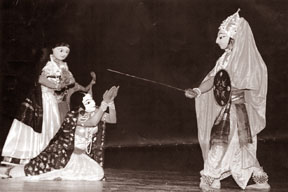 DANCE: The earliest known masks have been found in the excavations of the Harappan civilization of India datable to 3000-5000 B.C. Since then masks have found their way universally to all civilizations. Seemingly masks have had their origin from the inborn desire of man in his primitive days to disguise themselves in their hunt for food.
DANCE: The earliest known masks have been found in the excavations of the Harappan civilization of India datable to 3000-5000 B.C. Since then masks have found their way universally to all civilizations. Seemingly masks have had their origin from the inborn desire of man in his primitive days to disguise themselves in their hunt for food.








